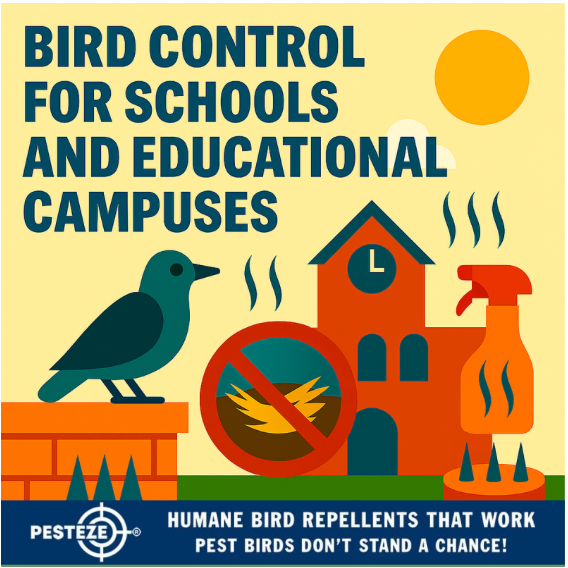BIRD CONTROL FOR SCHOOLS AND EDUCATIONAL CAMPUSES

BIRD CONTROL FOR SCHOOLS AND EDUCATIONAL CAMPUSES
SUMMARY
Bird invasions in educational environments pose significant health risks and operational challenges, threatening student safety, infrastructure integrity, and learning environments. This comprehensive guide provides strategic solutionsfor managing bird populations in schools and campuses in 2025.
FEATURES
- Student Safety First: Comprehensive strategies to eliminate health risks associated with bird populations in educational settings.
- Infrastructure Protection: Advanced methods to prevent structural damage caused by bird nesting and droppings.
- Educational Approach: Integrating bird control with environmental learning and ecological awareness.
- Cost-Effective Management: Sustainable solutions that minimize long-term maintenance and cleanup expenses.
- Regulatory Compliance: Ensuring bird control methods meet educational institution safety and environmental guidelines.
GUIDE DESCRIPTION
Educational campuses present unique challenges in bird control, combining complex architectural designs, open spaces, and dynamic human environments. Birds are naturally attracted to these areas due to abundant food sources, shelter opportunities, and consistent human activity.
The primary concerns for schools extend beyond simple property damage. Bird populations can create serious health risks, including respiratory problems, potential disease transmission, and allergenic environments. Droppings not only damage building surfaces but also create slip hazards and unsanitary conditions that directly impact student and staff well-being.
Modern bird control strategies for educational institutions must balance multiple priorities. Safety remains paramount, requiring humane, non-invasive methods that protect both human occupants and local wildlife. This approach demands a sophisticated understanding of bird behavior, campus architecture, and environmental dynamics.
Technological innovations in 2025 offer unprecedented solutions for campus bird management. Advanced sensor networks can detect and deter bird congregations without causing harm. Ultrasonic devices, strategically placed visual deterrents, and smart environmental modification techniques provide comprehensive protection.
Architectural considerations play a critical role in effective bird control. Campus design elements such as roof structures, ledges, ventilation systems, and outdoor gathering spaces often unintentionally create ideal bird habitats. Implementing preventative architectural modifications can significantly reduce bird attraction and nesting opportunities.
Educational institutions must also consider the legal and ethical dimensions of bird control. Many bird species are protected by federal and local regulations, requiring careful, scientifically-informed approaches. Collaboration with local wildlife experts, environmental scientists, and professional bird management teams becomes essential.
A holistic approach integrates prevention, technology, and education. Students can be engaged in understanding ecological balance, bird behavior, and humane wildlife management. This approach transforms bird control from a mere maintenance issue into a valuable learning opportunity about environmental stewardship.
- Pukhraj Sharma


Comments 0